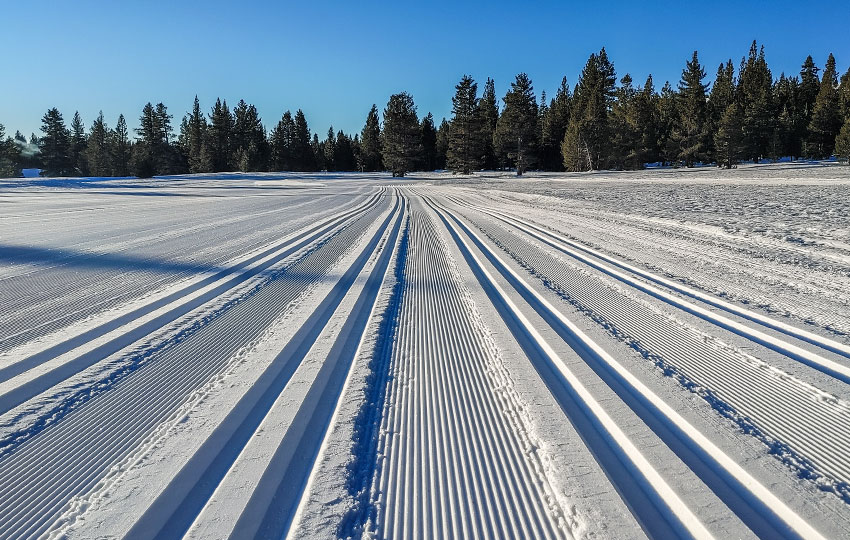
Gear is specific. Technique is universal. Now, I agree that your potential can be limited based on your gear’s capabilities. So, investing in quality gear is definitely worth it when diving deeper into your chosen endeavor. I also agree that buying new gear contributes to the long-term sustainability of the industry in which you’re participating.
All of that said, an investment in gear is still ultimately an investment in a product and its manufacturer. There’s nothing inherently wrong with this. But I would argue that an investment in yourself (i.e. learning proper technique) will have a greater impact on your long-term experience in the sport or activity.
Furthermore, investing in technique shouldn’t be limited to learning only sport-specific body movement. You should also incorporate into your experience strength and agility training, conditioning, and nutritional considerations. Treat this opportunity as an immersive experience. By doing so, not only will you learn new ways in which to move your body but you’ll also gain unique perspectives. You’ll develop positive habits and start to see and experience the world differently.
Disclaimer
Of the four main activities that I discuss on Tahoe Trail Guide, cross-country skiing is by far the most complex. At least this is true with regard to the technique required to perform the sport. Yet, so many inexperienced cross-country skiers blame their gear for their lack of success.
Those same folks simply don’t understand the importance of taking lessons and learning to ski properly. Instead, a common refrain amongst them is that “It can’t be that hard. I’ll just figure it out as I go.” But classic cross-country skiing is deceptively complex. Despite it looking similar to walking or running, the movements and mechanics required to properly run traditional xc skis are vastly different (and they’re not obvious).
So, for the purpose of this article I offer this assessment in the context of learning to cross-country ski. Just know that this comprehensive approach applies to learning any new sport or activity.
And, regardless of your experience and longevity in a given sport or activity you should always be updating your skills through continued education. This is one of the hallmarks of mastery.
Lastly, this is a really long article so pace yourself 🙂
Support Tahoe Trail Guide with a financial contribution via PayPal (single contribution) or Patreon (reoccurring contributions). Your support of Tahoe Trail Guide is very much appreciated!

Gear is Specific
One-size-fits-all gear doesn’t exist. There’s a tool for every job, and a job for every tool. Every person, situation, and condition will require something a little different.
This isn’t to say that we need to own every piece of gear for our chosen activity. And, of course, there’s nothing wrong with having our favorite gear that we use all of the time. But what happens when it breaks, becomes lost, or we don’t currently have it on hand? We’re not fortune tellers, so what do we do when we choose the wrong gear for the occasion? Or, what if we simply don’t own the proper gear for the current conditions?
And, if we’re talking about cross-country skiing, consider the fact that snow conditions can sometimes evolve and deteriorate rapidly over only a couple of hours.
So, all we can do is select gear that we believe will be appropriate for the situation. Then, we’ll have to adapt our body movement and technique to overcome this lack of proper gear. We can also modify our plans and choose a different route to accommodate our gear on hand.
This is not bad logic. In fact, it’s a standard practice to adapt your technique and modify your plans when faced with adverse conditions. But this scenario fails to acknowledge one key element.
The issue is that this is all predicated on possessing advanced skills in the first place. But beginners and inexperienced participants don’t have these skills. Regardless of gear, they simply haven’t logged enough miles and hours to develop sound technique that’ll enable them to adapt to variable terrain and conditions.
But it’s funny because all gear manufacturers will tell you the same thing … gear is the answer. This is their business, after all, so you either can’t do it or you can’t do it nearly as good as the next person because you just don’t have the right gear. And, by the way, they just happen to be selling the right gear (at least according to them!).
But we all know that this is not exactly true, right? And we all know that nearly every gear advertisement features some sort of professional-level athletes, no? Those folks make it look easy because they have skills, not just top-of-the-line gear. And, of course, the scenes for those commercials were filmed multiple times with the best shots making the grade while everything else was left on the cutting room floor.
In our modern era of consumerism, learning technique will always be secondary to buying gear. This is because there’s a lot less money involved in education compared to products.
That, and the fact that learning takes a lot of work!
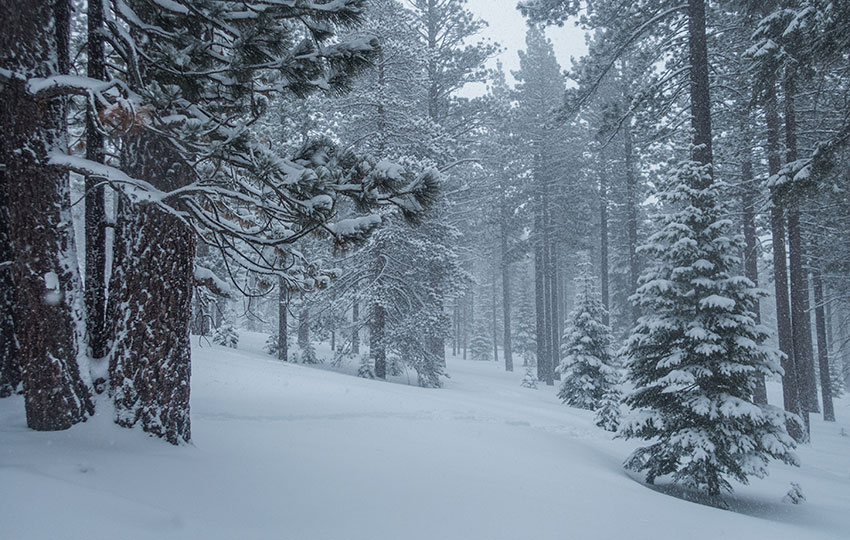
Will Gear Make Us Better?
Gear obviously plays a major role in what we can accomplish in our chosen sport. But what I typically find is that high-end gear will usually enable an intermediate or advanced athlete to perform better. Expensive gear will not transform a novice cross-country skier, for example, into an advanced skier. In fact, it’s probably going to make them an even worse xc skier. This is because that new pair of $800 skate skis will be so light and responsive that they’ll amplify every flaw in the beginner’s technique. So, quality gear can create quality output. But we have to have the skills to begin with in order to effectively operate that high-end gear.
On the other hand, junk gear is just that – junk. It’s poorly manufactured with inferior materials. Mostly it’s just made to look like the other gear, but it won’t function in the same way. So, it’ll fail us when we need it most and it’ll often prevent us from developing our skills in the long term.
My recommendation is to start with middle-of-the-road gear. That way it won’t hinder your learning process and it’ll provide a platform from which to grow.
What is Our Relationship with Gear?
In contrast to my above criticism of the outdoor gear industry, in the end I am a gearhead. I have a sizeable collection of backpacking and cross-country skiing equipment. Additionally, I own plenty of other outdoor gear and clothing, as well as photography equipment, art supplies, and naturalist-related reference books. The bottom line is that I believe in having a selection of useful resources from which to choose.
But I also believe that gear is simply a means to an end. It’s there for us to use in pursuit of adventure. Gear is not something to covet. Maintain and take care of it, obviously, but make sure you actually use it.
Most importantly, however, is that if the gear in question costs less than a few hundred dollars stop wasting your time trying to find the perfect piece of gear! The gear will either work for you or it won’t. And you’ll never know until you actually use it. So buy it, try it, and then decide if it needs replacing.
Don’t get me wrong, I’m not advocating for you to buy everything in sight. But the amount of time people (with way more money than me) waste researching inexpensive gear is absolutely mind-boggling. Purchasing a new set of skis or poles or boots (or whatever) will not be the most important decision you ever make. Nor will it send you into bankruptcy. Stop treating it as such.
Besides, if the gear doesn’t work for you at least now you know. And this is more information than you had before the purchase. So either return it, give it to somebody who’ll make use of it, or keep it as backup and emergency gear.
How Much Gear is too Much (or too Little)?
Do you own one of everything and only use each piece of gear once? Or, do you have only one set of gear and use it every time you adventure? My approach to owning gear is closer to the former, whereas many people fall into the latter category.
I realize that people could easily criticize me for owning what they believe to be an “excessive” or “decadent” collection of gear. This, especially considering how little money I have and make. But adventuring outdoors year-round is what I do. In addition to dedicated adventuring, my lifestyle usually involves hiking or xc skiing (depending on season) before, during, and/or after work. So having a selection of functional gear and clothing on hand is essential.
And by owning multiple sets of cross-country skis I can ski in any snow condition. This flexibility also spreads out the wear and tear that any one set of skis accumulate over a season, which effectively extends the life of all of my skis.
I do wish one piece of gear did it all but, like I said, gear is specific. There’s no one-size-fits-all. So I find it odd that people (again, who have far more money than me) insist on only owning one athletic jacket, for example. Then they proceed to wear the threads out of it before purchasing a new one.
Don’t buy the whole store. But athletic wear does come in different weights and materials designed to accommodate different temperatures and weather conditions. Give yourself some options!
Again, I realize this sounds like mixed messaging due to my previous snarky remarks about the outdoor gear industry. However, being safe and having a good time outdoors does require you to have some gear. You can’t get away from that fact. And you would do well to accumulate at least a small collection that’ll provide options when the weather turns nasty.
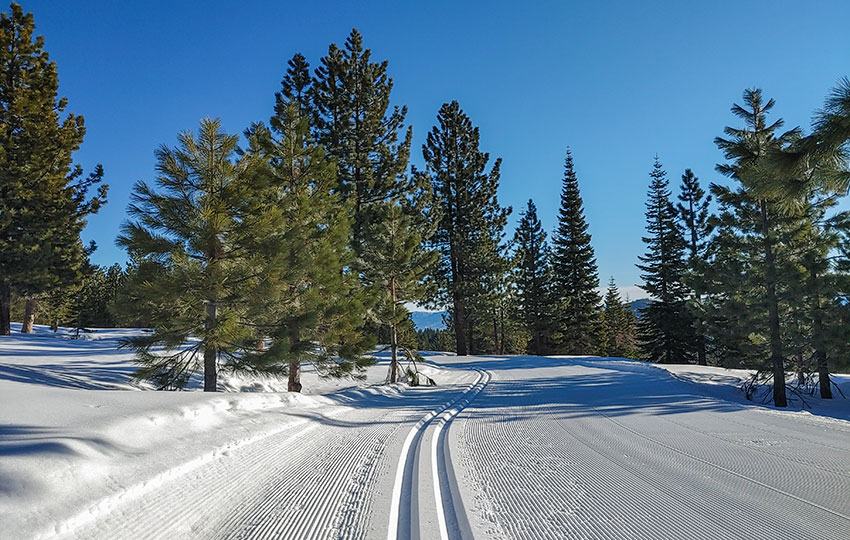
Technique is Universal
At the beginning of each of my YouTube cross-country ski videos, I always share the type of skis, bindings, and boots that I’m running (in the video). I also include this information in the description below each video.
Why do I do that?
Because it’s one of my absolute least favorite questions to answer. So I just put the information out there as soon as possible so as to avoid the question in the first place. But people still ask! And people ask me the same thing regarding the camera and lens that I use for photographing wildlife. I realize that both questions seem innocent enough, especially if the person is actually in the market for new gear.
However, the true nature behind these questions of gear more often than not is a certain disbelief in what I’m able to accomplish (with the gear). I must be running some sort of magical skis, right? Clearly, I got the memo on what to buy this season. And if you, too, buy the same gear you’ll be able to accomplish the same things, right?
Wrong.
This is not how life works not matter what anyone says. Not with skis. Not with cameras. You need to have skills and know how to operate the gear before you can achieve great things with it. And this takes time. A lot of time.
My target goal for each cross-country ski season is 100 days on skis. And I usually reach that goal. During every one of my ski sessions I’m working on some aspect of my skiing regardless of gear, conditions, or available time. I’m always having fun, but I’m also always training to become a better skier. And if you notice in my xc ski videos, I use many different types of cross-country skis in many different conditions. But my skiing is nearly always consistent. The reason for this is that I have a good grasp on technique and I know how to adapt my technique to accommodate just about any environment or gear.
I don’t say this to impress upon you that I’m some sort of cross-country skiing messiah. I’m simply trying to illustrate that gear is only a small piece of the puzzle. It’s not the driver of success. Your dedication to the craft and efforts to become better than when you started is the reason that you’ll become a great cross-country skier.
So when people ask me about what type of gear I use, the answer is usually a dead end because it’s the same gear available to anyone else. There’s nothing particularly special about what I use. Essentially it’s the same gear that you could buy at any REI. And, honestly, do you believe that if you owned the same setup you’re going to ski like me? There’s so many factors to becoming a good cross-country skier that when you put that idea into words it sounds absolutely ridiculous, right?
Instead, ask me about my recent experience practicing step turns or hockey stops or V2 technique (for skate skiing). Inquire about the most beneficial tip I learned at my most recent weekly instructor clinic. Question my intentions behind practicing Telemark turns off-piste using skinny skis, soft boots, and long poles during my last week of work at the cross-country ski resort during the 2021/22 season.
These are the important things because when you learn proper technique, gear becomes a matter of preference not necessity.
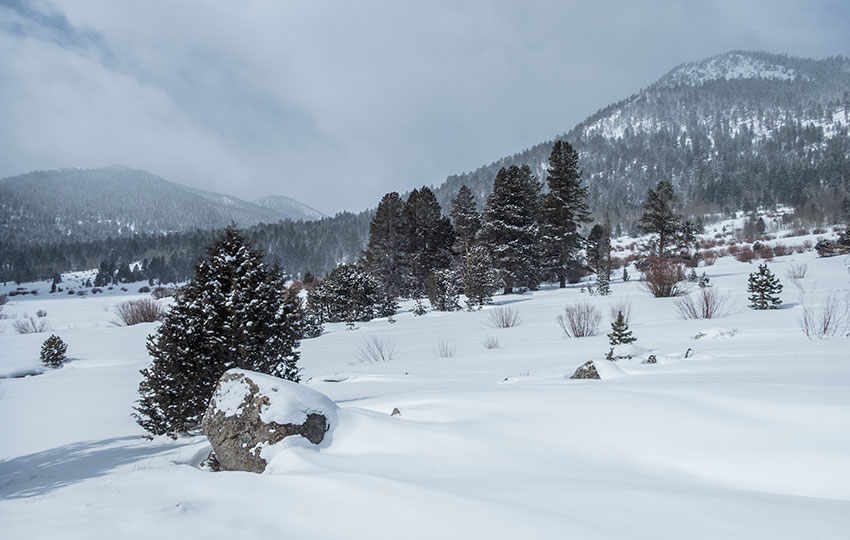
Learning to Move Forward
No matter how good you think you are in your chosen field, you can always become better. There’s always something new to learn because everything evolves. Beliefs, strategies, and techniques change based on information yielded from older methods having been put through the ringer over time. And most of these changes are a result of the desire to go farther, faster, and longer while expending less energy.
Who doesn’t want any of that?
But you see them all the time … the people who look like they’re stuck in a time capsule or stasis field. They have the uncanny ability to remain unchanged after all these years. Whether they’re training in Brazilian Jiu Jitsu, playing chess, or cross-country skiing, for example, you can see the time stamp on their technique. This is because they never advanced beyond what they learned 5, 10, 20, or 40 years ago.
I agree that not all change is necessarily for the better, but overall it typically is. There are usually plenty of good reasons that nobody trains or plays like the old days anymore.
Understanding our roots and knowing why we do the things that we do is always beneficial to our learning process. However, let’s continue to move forward! Let the past remain in the past, and let’s discover new and exciting ways of doing old things. So, challenge yourself. Demand more from your mind, body, and experience. Be flexible and adaptable. Put in the work necessary to learn new skills or update your current skillset to become more efficient and effective at your sport or craft.
If you think you already know it, just consider any professional athlete at the top of their game. They’re surrounded by coaches and trainers who constantly push them to become even better. And because they possess solid foundational knowledge, they’re capable of adapting their technique to accommodate new situations and environments. Of course those pro athletes typically have a definitive style to their work. But when you look at the entirety of their career, without question, their technique and style has evolved.
Regardless of whether or not this activity is something that you do for fun on the weekends or grind at every day of the week, strive to do better. If you’re going to do the thing, do it right. Dive in and immerse yourself in the experience.
Learning Transferrable Skills
Imagine that you’re standing in a circle with eight other people waiting to introduce yourself at a group cross-country ski lesson. Perhaps the only sport you’ve ever really tried was snowboarding last season, when you went to a small resort a handful of times with co-workers. You at least have some idea as to what it feels like to slide on snow. This isn’t a lot of information to work with, but it’s more than the person standing next to you who’s never even set foot on snow until today. But you also learn during their introduction that they’ve been an avid soccer and ping pong player all of their life. Now who do you believe has more of a relevant background when it comes to learning to cross-country ski on that day?
Obviously, a group lesson is not a competition. You don’t win a prize for being the best student of the day. And there’s no way in which to predict who’s going to learn the skills presented faster and more efficiently. There are, after all, countless factors to consider when learning a new skill.
What I do know, though, is that it’s a lot easier to learn new things when you’re already accustomed to learning new things. I realize that this sounds a bit vague, but consider the person who’s constantly challenging themselves by learning new skills and information. They’re not only learning those sport or activity-specific movements or strategies. More importantly, they’re training their minds and bodies to be adaptable. They’re making it a practice to acquire new data so that they’ll have a larger library of information from which to draw upon in order to find common ground among activities.
Inertia is a major player when it comes to learning new skills. So if you aren’t actively engaging your mind and body on a routine basis, you’ll have to work against that sedentary nature when learning new skills and information.
But when you go down that path of being a lifelong learner, at some point everything becomes familiar. You start to understand and experience some universal truths about learning and body movement. For example, there may be a different veneer on this thing right here, but once you look beyond the superficial layer it becomes clear that it’s very similar to that other thing over there.
The bottom line is that learning is fun. And what makes learning even more fun is that the more you know, the more you can learn (and do so faster). You’ll also be able to retain information better because you can often find appropriate applications (for the new data) in other aspects of life. Eventually you’ll be able to do more than regurgitate facts and perform basic body movement because you’ll have internalized and assimilated that new knowledge and experience. Then you’ll really be cooking with gas because you’ll be capable of creating new concepts and movements and have opened up countless opportunities for improvisation.
Learning to Embrace the Immersive Exprience
Lots of people just want to have fun at doing this thing on the weekends. They don’t want to make a big production out of it, so good enough is often good enough. But couldn’t you have more fun if you were better at it? And if it’s already fun, don’t you think it would be just as fun to actually train within that discipline you enjoy? Sure it’s going to take some work, but when you’re doing something that you love the work feels meaningful and relevant. In essence, the work you put into the activity is an investment in fun over the long term.
But you do have to find accurate and relevant information to your specific experience and journey. This can be challenging because not all information and instructors are the same. But if you approach the learning process with an open mind you’re guaranteed to come out of each experience learning something beneficial to your practice.
I generally recommend approaching learning in a standard fashion which, is to say, work from general to specific over time. Don’t get hung up on too many details early on, lest it bogs you down and sours your experience. Embrace a beginner’s mind. Be humble. Be open to new information and experience. Ask questions, but not too many, at any given time. Know that you’re not going to become an expert in your first lesson. Or, even your second lesson for that matter!
Also consider specific goals for each of your sessions whether you’re training on your own or with an instructor. For example, instead of just trying to become a better skier, select a specific task (that’ll help you to ultimately become a better skier). Consider goals like learning to push off more effectively or preventing yourself from sliding backwards when skiing uphill. Maybe you want to extend the duration of your glide or feel safer and more in-control on the downhills. These are all smaller and reasonable tasks that inch you closer to becoming a better cross-country skier.
And, you’re accomplishing them with the big picture in mind. Why do I say that? Because choosing to tackle these smaller tasks implies that you’re planning on doing this thing in a series of sessions and over a longer period of time. You’re not operating based on the idea that … I need to do it all now because I don’t know if I’ll ever get back to it! Rather, you’re being patient and choosing to make incremental gains. This is how to succeed at becoming a better cross-country skier (or whatever you choose). You’re always moving forward and making the most of every moment you have to train.
The following are some ideas for learning, engaging in year-round and sports-specific training, as well as building a supportive community of like-minded practicioners.
- Practice and lots of trial and error
- Lessons (group or private)
- Apprenticeship (mentor or coach)
- Classes and courses (outdoor academic courses, community college classes, local outfitters)
- Literature (reference books, online articles)
- Videos (YouTube, DVDs)
- Local clubs, groups, teams (active participant)
- Volunteerism and donations (active supporter)
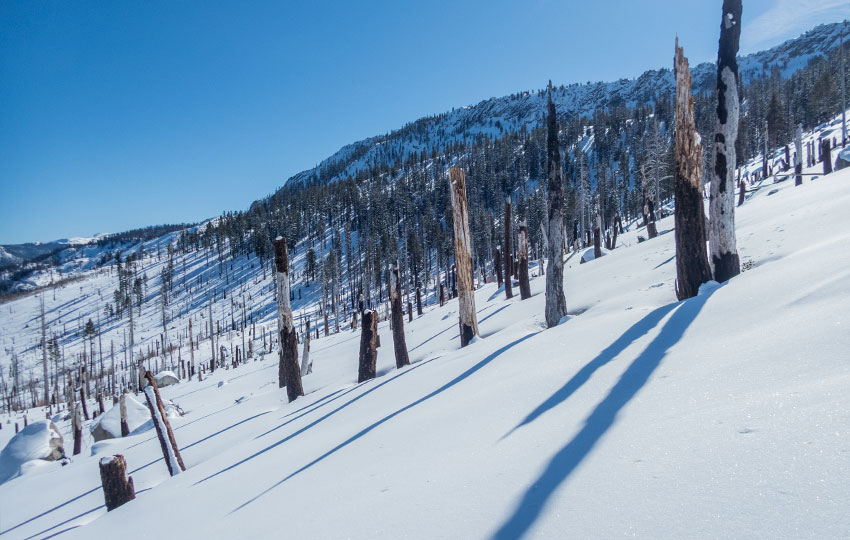
Conclusion
There’s no question that this was a long article, so I’ll keep these final words brief.
If you couldn’t tell, learning is something of which I’m extremely passionate. I always try to encourage and inspire people to embrace learning as a lifestyle rather than something you do just to earn that promotion at work or to pass that class in school.
Learn new skills because they’re of interest to you, and because you want to see how far you can take them.
Ultimately, this is your life and you can accomplish anything you set your mind to. And since we’re living in this great age of information, you have endless opportunities for becoming exceptional at any endeavor of your choice. The only thing holding you back is your own mind.
So be open to all possibilities, learn to adapt, and invest in yourself by committing to the thing.
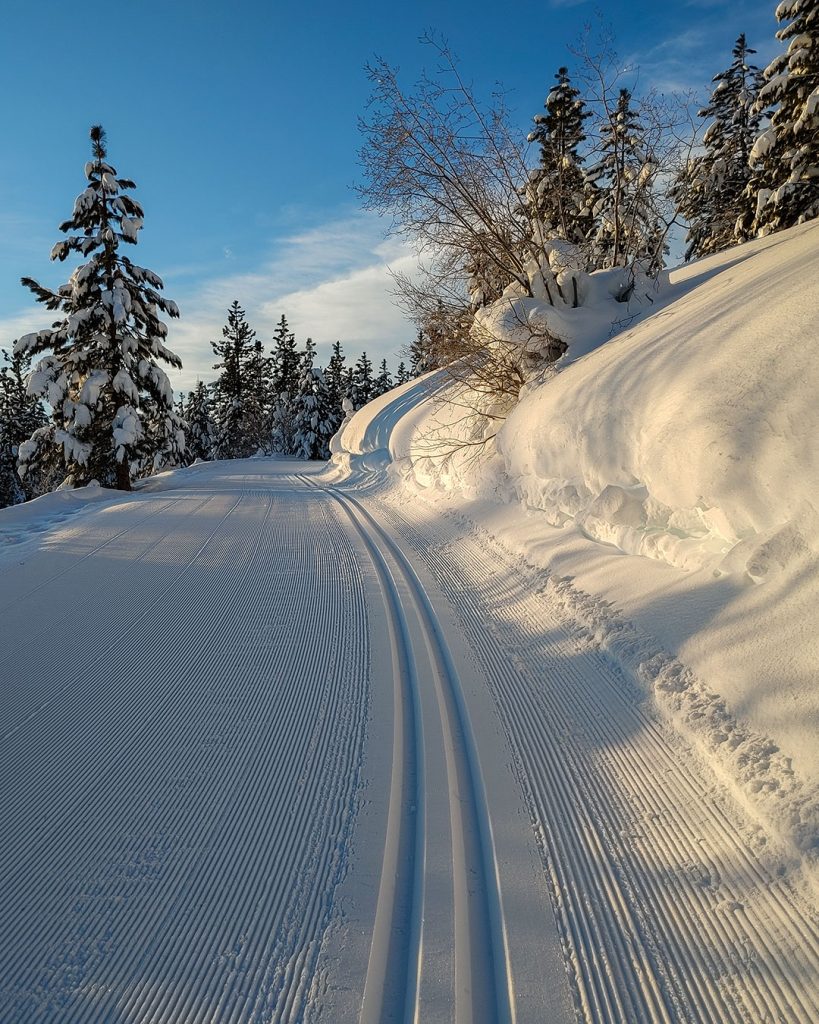
Cross-Country Skiing Explained Articles and Videos
Please note that I wrote and produced the Cross-Country Skiing Explained series of articles and videos with the beginner and intermediate cross-country skier in mind. This is the demographic for whom I most often serve(d) while working in the outdoor recreation industry at Lake Tahoe. I basically treat these articles and videos as extensions of the conversations that I have (had) with those customers.
That said, expert skiers probably could take away something of value from these resources. Just know that I don’t address race-oriented philosophy, technique, or gear selection.
Considerations for buying cross-country ski gear (new and beginner xc skiers)
- Intention, Types of XC Skis, and Whether to Buy New or Used (Part 1)
- How Much Gear to Acquire, Evaluate Your Commitment, Value of Taking XC Ski Lessons (Part 2)
- Can One Set of Classic Cross-Country Skis Work for Groomed and Off-Track XC Skiing? (Part 3)
- Can I Use One Set of XC Ski Boots for All of My Cross-Country Skiing Needs? (Part 4)
- Overview of Off-Track and Backcountry Cross-Country Ski Gear
- Invest in Technique More than Gear
Classic Cross-Country Ski Components
- Introduction to Classic Cross-Country Skis (Part 1)
- Geometry of Classic Cross-Country Skis (Part 2)
- The Grip Zone of Classic Cross-Country Skis (Part 3)
- Types of Bindings for Classic Cross-Country Skiing (Part 4)
- Ski Boots for Classic Cross-Country Skiing (Part 5)
- Classic Cross-Country Ski Poles (Part 6)
- FAQs about Classic Cross-Country Skiing
Waxing Your “Waxless” Cross-Country Skis (for beginner and intermediate xc skiers)
- Introduction to Waxing Your Waxless XC Skis
- Step-by-Step Waxing Tutorial
- FAQs About Waxing Your Waxless XC Skis
Cross-Country Skiing Techniques, Demonstrations, and Related Concepts
- Outdoor VLOG (emphasis on the cross-country skiing experience)
- Cross-Country Skiing in Challenging Conditions
- Considerations for Winter Adventure in Lake Tahoe’s Backcountry
- Using the Side-Step and Herringbone Techniques in the Backcountry
- 10 Tips for Spring Cross-Country Skiing in the Backcountry
- 5 Reasons to Love Spring Cross-Country Skiing
- Considerations for Cross-Country Skiing During the Fall and Early Winter
- Discussing the Goal of Becoming a Better Cross-Country Skier and Embracing Backcountry and Groomed Terrain in Pursuit of that Goal
- The Cross-Country Skiing Experience: Immersing Yourself in Winter